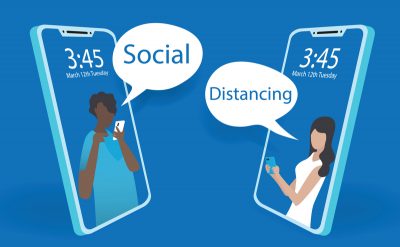Highlights:
- Webinars are more in the public eye than ever because of the unprecedented events that took place in 2020.
- After looking at first-party data from the largest B2B Content library, it was found that the number of webinars went up by 103%.
Remote work can make one miss out on opportunities to build unattainable personal connections without direct human interaction. It’s not the same without face-to-face interactions. Now the question is, how should corporations react?
Creating appealing digital experiences that persuade people to participate is crucial.
Webinars are an essential part of this strategy since they capture the interest of a broad audience. Unlike e-books, blog posts, videos, and podcasts, webinars allow for two-way conversations while still providing audiences with knowledge and information.
Businesses have long recognized the value of webinars, but only recently have automated and on-demand webinars become mainstream. You can host these events without giving a live presentation to win new clients and keep existing ones.
Automated webinars offer one of the highest conversion rates since companies may reach their audience anytime.
This guide intends to demonstrate a different path. We hope you’ll be motivated to make your own by giving you examples that stand out. From best-in-class webinars to completely integrated digital experiences, we hope they give your ideas on how to share with your audience possibilities they can’t reject.
So come in and find out how to improve your digital experiences.
Stand-out webinars
Webinars are more in the public eye than ever because of the unprecedented events that took place in 2020. Even if webinar experiences have always played an essential part in ideas of a digital-first future, the COVID-19 pandemic has propelled that future forward in a hurry.
According to ON24 research, there were 19,294 webinars held in April 2020 alone, compared to approximately 7,000 webinars held per month on average in 2019. The corporate world is continuously changing, and as a result, companies can use various methods to produce innovative, creative webinar experiences and capitalize on the specific advantages of the format.
Quick tip #1: Capitalize on the 103% increase in webinars – How much did 2020 speed up the use and implementation of digital experiences? After looking at first-party data from the largest B2B Content library, it was found that the number of webinars went up by 103%. This shows how vital digital experiences are as face-to-face interactions become less common.
Enticing audiences with an engagement hub
We are learning from exemplary success cases that digital experiences are not going anywhere soon. Data by McKinsey research demonstrates that purchasing journeys are becoming increasingly digital, and over 70% of decision-makers like interactions that take place remotely. Therefore, if you haven’t already done so, now is the moment to construct always-on experiences that will produce long-lasting benefits for your audience and generate value well into the foreseeable future.
Quick tip #2: Display clear webinar calls-to-action engaging and effective consoles – Customer journeys don’t just have one point of contact. Because of this, make sure to use your webinars to get people to take the next step. Using the right engagement tools, you can clarify what you want your audience to do while you talk to them.
Fully integrated digital experiences
Webinars may be brought to life in various fascinating ways. Still, one of the best ways to define your company as a digital-first firm is to take your virtual offerings to the next level by providing a holistic digital experience. You need to create a captivating digital experience by combining elements such as engaging webinars, individualized target pages, and a robust engagement hub. This specific example demonstrates how well these elements may work together.
Quick tip #3: Sort your content by topic, so it’s easier to find – When there are a lot of webinars, it can be hard to find a particular room or track, just like it can be hard to find a specific room or way at an in-person event. To help people find the session they want to attend, make sure your event page or Engagement Hub is well-organized and offers filters and search tools to save them time.
To conclude,
Audiences favored digital channels before the outbreak. Reports show that more professionals use webinars each year. Similar research by SiriusDecisions finds webinars are the top channel for engagement and demand.
As the world moved online in 2020, businesses and audiences embraced digital experiences.
Businesses have realized that digital experiences have replaced their interrupted strategies and are often superior for them and their customers. With several firms raising the standard, the possibilities for future virtual experiences are boundless.
An investment in digital experiences now is a future-proof move. You may now discover how digital experiences can enrich content and engage viewers anytime and anywhere.













